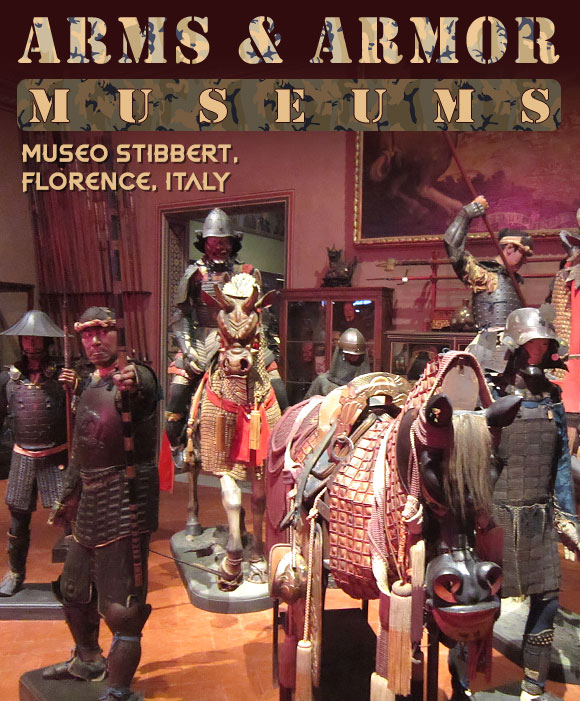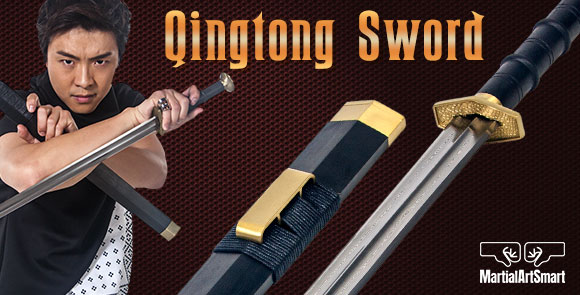
Ah Florence! It’s one of the most beautiful cities in the world. Florence, or as it’s called it in Italian, Firenze, was the center of trade during Europe’s medieval period, which made it one of the wealthiest cities of that era. Ruled for centuries by the House of Medici, this clan of bankers supported the arts, and their legacy is everywhere in the architecture, the museums, and the culture. Today, the rich launch themselves into space, which only catches the ire of the netizens for a few days, but back then, the Medicis knew how to become immortal. They fostered art that has been cherished for centuries. Florence holds some of the world’s finest museums, especially for renaissance art, with many collections that cannot be missed by any tourist.
However, if you’re into the martial arts, there’s one museum that stands out and it’s not a product of the Medicis. It was the creation of a wealthy art collector, an Englishman born in Florence, Frederick Stibbert (1838-1906). His legacy, the Museo Stibbert, houses one of the most magnificent collections of arms and armor I’ve ever seen, one of the largest on the planet. In fact, I daresay that any martial arts aficionado that visits Florence and doesn’t make the trek to see the Museo Stibbert's collection has completely and utterly failed and should just go home to rethink their lives.

Stibbert was born into money. His grandfather was Lieutenant General Giles Stibbert (1734–1809). He served as India Commander-in-Chief for two terms, 1777-1779 and 1783-1785, during which he plundered massive wealth as Britain exploited India. Frederick's father, Colonel Thomas Stibbert (1771-1847) met his mother, Giulia Cafaggi (1805-1883), in Florence after the war against Napoleon. They had three children, Frederick being the oldest, with two sisters, Sophronia and Erminia. After his father passed, the Stibbert family into a villa of Montughi, which eventually became the Museo Stibbert.
At 21, Frederick Stibbert was the lone heir of the family fortunes, including the massive wealth accumulated by his grandfather, as well as that of his father and uncles. Being independently wealthy, he didn't have to work. Instead, he devoted his life to collecting art, arms, and armor, filling his family home, and transforming it into a unique museum. A seasoned world traveler, Frederick made contacts with the most important antique dealers of his time throughout the principal capitals across Europe. Upon his death, he willed the museum and its extraordinary collection to Florence. The museum was opened to the public three years after his death.
The Museo Stibbert is off the beaten tourist track of Florence, but not that far. There is a lovely park that is part of the property and open to the public. The museum collection includes paintings, tapestries, furniture, musical instruments, liturgical objects, archaeological items, costumes and curious, some 50,000 items, 36,000 of them catalogued. There are some 16,000 pieces of arms and armor from all over the world, divided into three major armouries, European, Islamic and Japanese. That’s right – 16,000 pieces.
The collection is not presented like a conventional museum. Only some of the displays are behind glass cases. There are walls and walls of swords, pole arms, bows, guns, and spectacular weapon displays. There are cases packed with daggers, fittings like pommels and parts, and shelves of pieces. There are rooms of armor – and all high-grade examples: parade armor, battle armor, even the suit one of the Medici wore when he died. The display cases are densely packed with objects of interest that they can hardly be digested from a passing glance. The centers of the rooms have life-sized mannequins fully armored and armed. What’s more, there are all sorts of other objects d’art throughout the building. It’s tremendous.
When I visited in 2018, tours were only permitted in small intimate groups led by a knowledgeable guide who narrated in both Italian and English. You must stay with your guide. Our group was just me and my family, and a few Italian ladies. Our guide was a lovely young woman who gave up on me quickly shortly after our tour began. I was immediately engrossed in the collection, pontificating to my tolerant family about observations that were deeper than her standard tour speech like a total sword nerd. She pulled me aside and said, “I think you know everything I’m going to say.” I was a little embarrassed (my daughter was already mocking me for fangirling so much) but asked her to just point out items that I might miss. She did exactly that, which was perfect. The collection was so massive that it was easy to miss details. At one point, she brought my attention to a suit of Islamic chainmail where every ring was engraved with characters of protection from the Quran. I would’ve totally missed that detail if she hadn’t taken the time. From afar, that just looked like another suit of chainmail among dozens upon dozens of suits of armor. Up close, it was so intricate, meticulous, and utterly beautiful.

The European Armoury
The European Armoury consumes the bulk of the collection. It’s Stibbert’s culture and he had an acute eye for collecting fine and exemplary pieces. Most of the collection is from the 16th to 18th centuries with some archaeological and 14th-century specimens and 19th-century reproductions. Imagine being independently wealthy to collect arms and armor from 1860 to the beginning of the 1900s.
Do you like knights in armor? This museum is for you. Stibbert displays the voluminous collection of armor on life-size mannequins, arranged in dioramas of warrior squads, and these are centerpieces in many of the rooms. Often, when armor is displayed, it is behind cases or presented from only one angle (and there’s plenty of that here too). These centerpiece dioramas allowed visitors to admire the armor from all angles. I have never seen so many suits of armor in one place.
I was overwhelmed by the sword collection. I’ve never seen so many swords in one place either. I’m a former fencer, even earned my Prévôt d'armes degree, so rapiers and court swords captivate me. A single example of a well-made rapier can fascinate me for hours. When confronted with walls upon walls filled with dozens of rapiers and court swords, there were just too many to see them all. Such impressive craftsmanship and artistry.
The Islamic Armoury
There are two central rooms that are devoted to the arms and armor of Islam. When the armoury of S. Irene in Istanbul was dismantled, Stibbert acquirement many of the pieces, including a large part of the Ottoman pieces in the Museo Stibbert's collection. Islamic armor is a bit of a gap in my Hopology studies. When I had an apartment in Pune, India, I visited the Raja Dinkar Kelkar Museum that had collection of arms and armor (and musical instruments). My deepest dive was when I was on MAN AT ARMS: ART OF WAR and we examined the haladie knife and the insane sword-cat-o-nine-tails urumi. This was the extent of my knowledge so far, so the Stibbert collection was a revelation.
Islamic art has a different aesthetic, and this is reflected in their arms and armor. Where European and Asian weapons are often adorned with religious icons (with the belief that they might offer some protection or empower them), Islam never portrays God in any image. There are no saints, crucifixes, deities, or demon grotesque motifs in their designs. Instead, Islam adorns their weapons with exquisite flowing calligraphy and sophisticated geometric patterns. Like that suit of chainmail, it’s all in the details. You must look deeply at these pieces to unravel their exquisiteness, and I wish I had a better notion of what I was seeing at the time. It was a crash course, far more than I could possibly absorb in our short visit. And I spent a long time in each room. I was always the last to leave, much to my tour group’s dismay, as I lingered over the vast exhibits.

The Japanese Armoury
In the late 1870s, Stibbert began collecting Japanese arms and armors. Japan had begun entering the global community back then and hosted their first World’s Fair exhibition in 1872. After two more, a National Japanese Exhibition was held in Kyoto in 1895. Stibbert took advantage of Japan’s entrance into these Universal Expositions and began acquiring pieces to form one of the earliest Japanese collections in Europe. The collection houses 95 suits of armor, 200 helmets, 285 swords and spears, 880 tsubas (guards), and many assorted fittings, mostly from the Momoyama and Edo periods (1570-1868).
Beyond fencing, I dabbled in Kendo and Iaido for several years, so I have a better grasp of Japanese sword culture than I do of the Islamic stuff. Back in 2009, the touring exhibit “Lords of the Samurai” came to San Francisco’s Asian Art Museum, and I was all over that. But beyond the Musashi pieces in that exhibit, the Japanese collection at the Museo Stibbert dwarfs that show from every angle. There are more swords in one case at the Stibbert than was contained in the entire ‘Lords of the Samurai’ collection. There are more suits of armor in a single exhibit alcove than what toured with ‘Lords of the Samurai’ too. And there are several sword display cases and multiple exhibit alcoves.
Like with most museums, Chinese arms and armor are sorely underrepresented. Tucked in the corner of the Japanese Armoury are a few glass cases with some assorted Chinese weapons. They are poorly lit and difficult to see. Nevertheless, I was amused to find a jian that was remarkably similar to one in my personal collection, no doubt from the same maker. I’ve seen other parallel examples, so I imagine that swordmaker was prolific, or perhaps a more recent maker from Republic of China period (1912-1949). More swords from that era are around because they didn’t have to survive the tribulations of time.
Florence holds some of the world’s greatest artworks like Boticelli’s Birth of Venus, Caravaggio’s Head of the Medusa, da Vinci’s The Battle of Anghiari, Ghiberti’s Gates of Paradise, Michaelangelo’s David, and so many more. But for me, the Museo Stibbert was the most inspiring. My camera crashed because I was taking so many photos (fortunately, that happened after completing the armor sections, so switched to my phone for the remainder of the exhibit.) It all went by too fast. If I ever am blessed enough to return to Florence, I’ll buy multiple tickets for the Museo Stibbert and just keep going through it again and again for as long as they’ll let me stay.
Museo Stibbert Bella Ciao!
The Museo Stibbert is located on via Federigo Stibbert 26 50134 Firenze, Italy. For more information, visit their official website.
Gene Ching is the Publisher of Kung Fu Tai Chi and KungFuMagazine.com.
![]() Print Friendly Version of This Article
Print Friendly Version of This Article


















